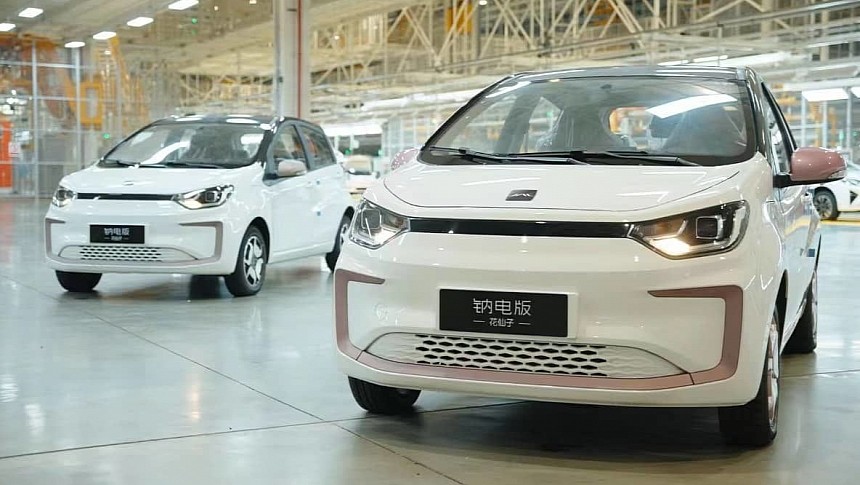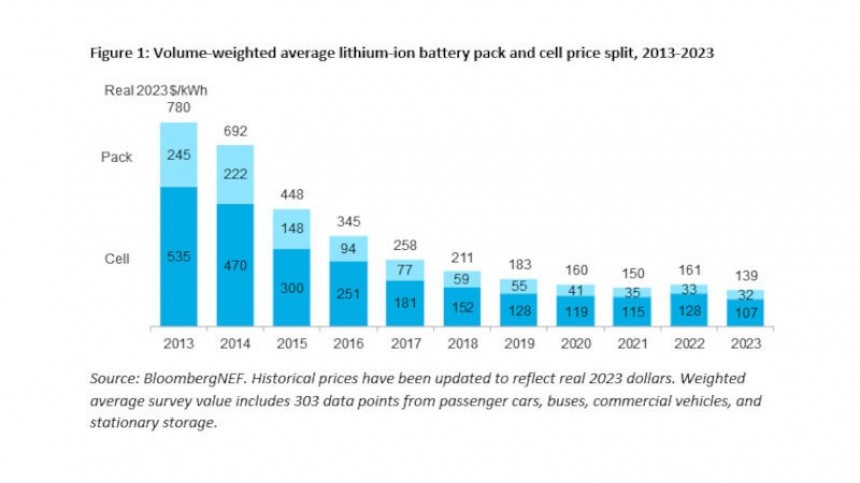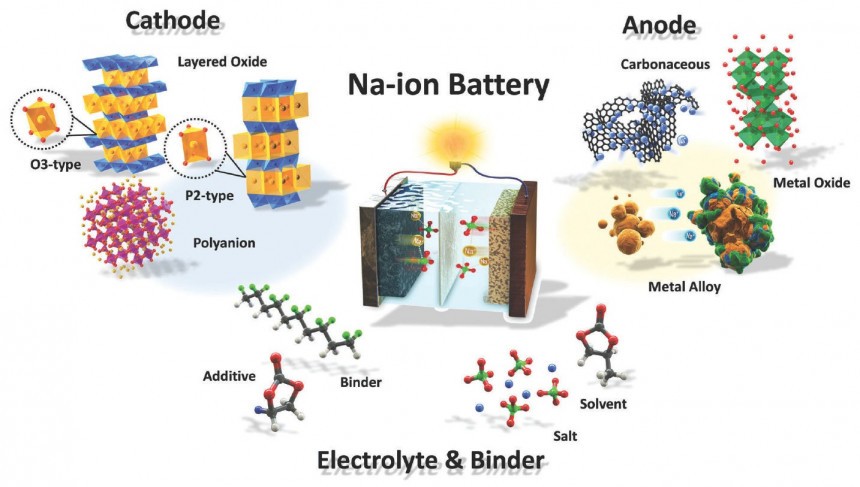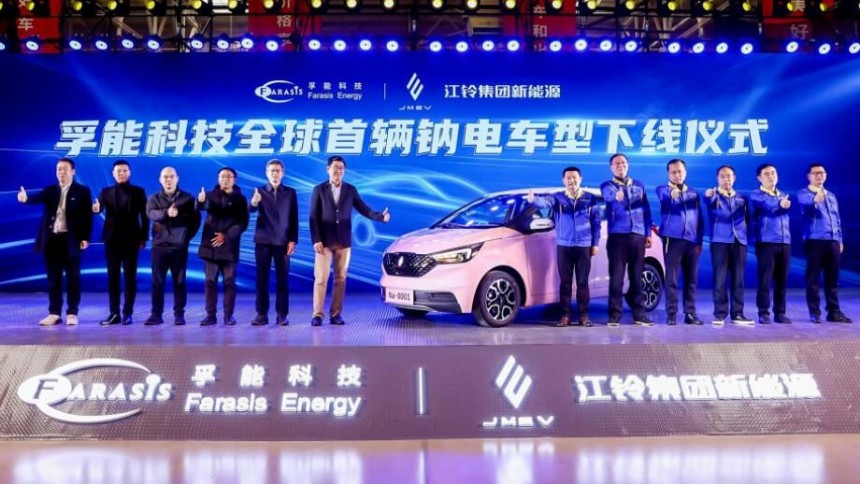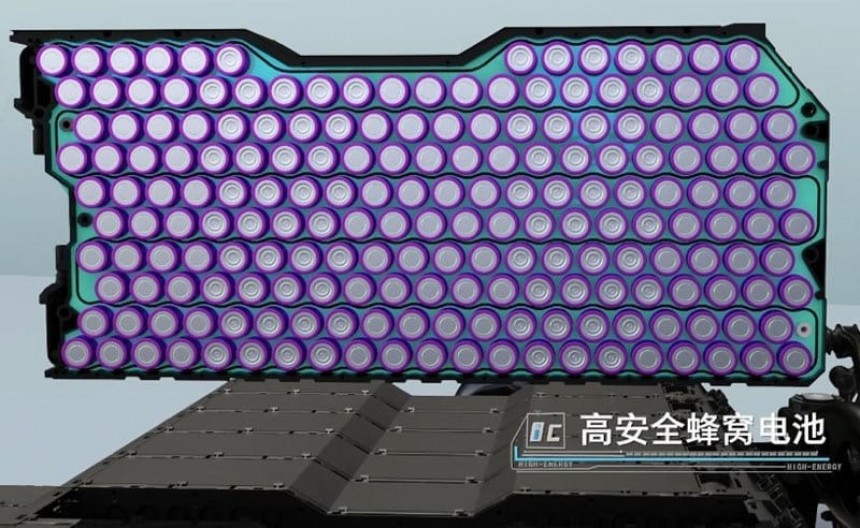In 2023, the US and European car industries warned about the imminent influx of cheap Chinese electric cars flooding Western markets. Maybe that's why the Chinese car industry seeks to keep momentum from the beginning of 2024, announcing another premiere meant to spook the Western. But you should not be fooled by pompous announcements, as the sodium-ion battery is still far from being a valid option for electric cars.
First, let me share that although I use a small, cheap Chinese electric car for my daily commute, I don't trust Chinese electric cars and the propaganda behind them. I also don't dig conspiracy theories, but there's something fishy about these too-affordable Chinese electric cars.
So, when I heard the news – that two Chinese companies were the first to put on the market the first sodium-ion battery cars – I had to find out more about what many out there call a "breakthrough" or a "historical milestone." I'll try not to be biased, but forgive me if I won't be as objective as you would expect.
For the EVs to close the gap with ICE vehicles in terms of price parity, the Li-Ion battery price must be well below $100/kWh. This is almost the case with the low-cost cathode chemistry lithium-ion batteries – the LFP (lithium-ion phosphate) – which cost, on average, a third less than similar NMC (lithium nickel manganese cobalt) batteries.
The problem is that LFP batteries' performance and reliability are worse than NMC ones, but that's a reasonable trade-off given the lower costs. Of course, Chinese companies are at the forefront of the LFP race, so their electric cars have an edge over American and European electric cars.
Still, there needs to be a logical explanation for the price gap, as transporting EVs from China to Europe or the US is very expensive. At the same time, presumably good manufacturing quality and the overwhelming trims require high investments and costs. So, is it fishy or what?
Back to sodium-ion batteries, their average price is already less than $80/kWh in 2023, and by 2030, it is expected to get to $40/kWh, which is impressive. But don't hold your breath: these batteries are mainly used in stationary grids or low-performance vehicles, such as two- or three-wheelers.
Compared to Li-Ion technology, the Na-Ion tech has much lower energy density. On average, NMC batteries have energy density between 150-200 Wh/kg (the best "recipes" can offer even more than 300 Wh/kg). LFP batteries' energy density varies between 90-160 Wh/kg; in some cases, it is close to 200 Wh/kg (at least, this is what CATL claims).
Sodium-ion batteries' energy densities range from 78-80 Wh/kg to 150-160 Wh/kg, but most Na-Ion batteries in use today have less than 100 Wh/kg. Many companies hope to achieve 200 Wh/kg by 2030-2035, but that's still a big if.
One of the most significant advantages of Na-Ion batteries is the abundance of resources needed. This tends to become crucial in the recent aftermath of supply chain bottlenecks. Many predicted lithium dependence would lead to some nations' dominance, like oil supplies. There's no such problem with salt, is it?
The bottom line is that there are high hopes in the battery industry that sodium could pave the way for a faster transition to electromobility. This leads us to our subject: the JAC Yiwei EV and Jiangling JMEV EV are the first mass-production sodium-ion battery electric cars the Chinese will buy early in 2024.
The most popular story about the first mass-production sodium-ion battery car on mass media and social media is about the new JAC YiWei model. It is fitted with a Na-Ion battery developed by HiNa Battery, a Chinese company known (in China) for its batteries used in buses, small vehicles and home energy storage.
JAC is particularly interesting to us because its parent company, JAG, is 50% state-owned, while the other 50% is owned by… Volkswagen. In 2020, this joint venture spawned a new brand, Sehol (or SOL), and launched the E10X electric city car.
It wasn't a completely new car, as it was basically a facelift of the previous JAC iEV6E, launched in 2016. In context, the E10X exported to the South American market received 0 (zero) stars in the Latin NCAP safety test. Well, it was cheap; who cared it was a coffin-on-wheels?
Oh, but wait, the previous JAC iEV6E was actually another facelift of the original JAC Yueyue, which debuted at the 2010 Beijing Show. So, the Sehol E10X was pretty old at the beginning of 2023, when VW decided to kill the Sehol brand and transform it into YiWei.
This way, the 2024 YiWei EV, powered by a sodium-ion battery, will be a more-than-ten-year model with some upgrades. This is the most essential factor for an affordable price – which we don't know at the moment. The previous E10X, powered by a 25 kWh LFP lithium-ion battery, had a starting price of RMB 72,900 (around $10,600 / 9,570 euros), so I expect the new car with a Na-Ion battery to be less in China.
There are no specs for the "first mass-production sodium-ion battery EV," and I can only relate to the demonstration car HiNa Battery presented back in February. It was called Hua Xianzi (Flower Fairy), the battery had a total capacity of 25 kWh and the maximum range was 250 km / 155 miles, according to the very permissive CLTC Chinese cycle.
Under the new WLTP European cycle, its range will probably be less than 200 km / 125 miles, but I doubt this car will ever come to Europe or the US. Like the Dacia Spring, a safer Renault K-ZE, the YiWei EV for Europe would require costly modifications to improve its safety for the more demanding Euro NCAP.
This city car has a length of 3.65 meters / 143 inches. This is 10 cm / 4 inches less than the Dacia Spring, which many don't even see as a proper car. I can hardly see this YiWei EV as a spearhead for Chinese invasion…
The rival for this YiWei EV comes from JMEV, a joint venture between Jiangling and… Groupe Renault. This "new" model is based on the JMEV EV3, with a 31 kWh lithium-ion battery and a CLTC range of 301 km / 187 miles. It has the same length as a Dacia Spring, and the starting price in China is RMB 62,800 (around $8,800 / 8,000 euros).
Now, the Na-Ion battery version is credited with a CLTC range of 251 km / 156 miles, 16% less than the Li-Ion battery version. Of course, the sodium-ion battery is also smaller, with only 21.4 kWh. However, the starting price is only 6% lower than the Li-Ion battery version. You do the math if the savings are worth it.
According to the company producing the batteries, Farasis, they have energy densities of 140-160 Wh/kg, which is astounding. Moreover, in 2024, the company claims that the second generation of its sodium-ion batteries will have energy densities of 160-180 Wh/kg. Astounding! By 2026, it will reach 200 Wh/kg. I'm speechless, really.
Ok, I'm not exactly speechless, but I'm more skeptical that the company is able to achieve the objective of improving its sodium-ion batteries' energy density by 25% in just a couple of years. It sounds more like propaganda marketing.
These cars are only affordable because they use new battery tech in old but upgraded boxes. Of course, the sodium-ion car tech is in its infancy, and I hope to see substantial evolutions over the next few years. But I doubt Na-Ion batteries will go beyond city cars this decade.
Maybe Volkswagen and Renault will use this technology in the cheaper EVs they want to sell in Europe in the following years. Possibly, at some point, the Chinese brand will indeed flood the European market with cheap EVs thanks to the Na-Ion batteries.
But, for now, these YiWei and JMEV EVs fitted with sodium-ion batteries are just some lab rats. They are far from revolutionary, groundbreaking, or historical. They might increase China's market share in Asia, South America, and Africa if their prices are much more attractive. But that's all.
A comprehensive electric car fitted with a compelling sodium-ion battery is still years away. Will it come from China? The odds favor the Chinese industry, but we should not underestimate Americans and Europeans. I'll keep the "historical breakthrough" syntax for another time.
So, when I heard the news – that two Chinese companies were the first to put on the market the first sodium-ion battery cars – I had to find out more about what many out there call a "breakthrough" or a "historical milestone." I'll try not to be biased, but forgive me if I won't be as objective as you would expect.
What does the sodium-ion technology promise?
The first thing Na-Ion tech could solve is the price barrier. Lithium-ion batteries are still costly, although their price has dropped significantly in the last decade. According to BloombergNEF, in 2023, the average price is around $139/kWh, more than five fold less than in 2013 when it was around $780/kWh.The problem is that LFP batteries' performance and reliability are worse than NMC ones, but that's a reasonable trade-off given the lower costs. Of course, Chinese companies are at the forefront of the LFP race, so their electric cars have an edge over American and European electric cars.
Still, there needs to be a logical explanation for the price gap, as transporting EVs from China to Europe or the US is very expensive. At the same time, presumably good manufacturing quality and the overwhelming trims require high investments and costs. So, is it fishy or what?
Back to sodium-ion batteries, their average price is already less than $80/kWh in 2023, and by 2030, it is expected to get to $40/kWh, which is impressive. But don't hold your breath: these batteries are mainly used in stationary grids or low-performance vehicles, such as two- or three-wheelers.
Compared to Li-Ion technology, the Na-Ion tech has much lower energy density. On average, NMC batteries have energy density between 150-200 Wh/kg (the best "recipes" can offer even more than 300 Wh/kg). LFP batteries' energy density varies between 90-160 Wh/kg; in some cases, it is close to 200 Wh/kg (at least, this is what CATL claims).
Sodium-ion batteries' energy densities range from 78-80 Wh/kg to 150-160 Wh/kg, but most Na-Ion batteries in use today have less than 100 Wh/kg. Many companies hope to achieve 200 Wh/kg by 2030-2035, but that's still a big if.
One of the most significant advantages of Na-Ion batteries is the abundance of resources needed. This tends to become crucial in the recent aftermath of supply chain bottlenecks. Many predicted lithium dependence would lead to some nations' dominance, like oil supplies. There's no such problem with salt, is it?
The real deal. Or just a marketing stunt
As I said before, this news is meant to be another blow to the Western car industry, and at first, it looks like the Chinese industry once again proved its dominance in the current rEVolution. Well, I hardly think it's a revolution; it's merely an evolution, if I may.The most popular story about the first mass-production sodium-ion battery car on mass media and social media is about the new JAC YiWei model. It is fitted with a Na-Ion battery developed by HiNa Battery, a Chinese company known (in China) for its batteries used in buses, small vehicles and home energy storage.
JAC is particularly interesting to us because its parent company, JAG, is 50% state-owned, while the other 50% is owned by… Volkswagen. In 2020, this joint venture spawned a new brand, Sehol (or SOL), and launched the E10X electric city car.
It wasn't a completely new car, as it was basically a facelift of the previous JAC iEV6E, launched in 2016. In context, the E10X exported to the South American market received 0 (zero) stars in the Latin NCAP safety test. Well, it was cheap; who cared it was a coffin-on-wheels?
Oh, but wait, the previous JAC iEV6E was actually another facelift of the original JAC Yueyue, which debuted at the 2010 Beijing Show. So, the Sehol E10X was pretty old at the beginning of 2023, when VW decided to kill the Sehol brand and transform it into YiWei.
This way, the 2024 YiWei EV, powered by a sodium-ion battery, will be a more-than-ten-year model with some upgrades. This is the most essential factor for an affordable price – which we don't know at the moment. The previous E10X, powered by a 25 kWh LFP lithium-ion battery, had a starting price of RMB 72,900 (around $10,600 / 9,570 euros), so I expect the new car with a Na-Ion battery to be less in China.
There are no specs for the "first mass-production sodium-ion battery EV," and I can only relate to the demonstration car HiNa Battery presented back in February. It was called Hua Xianzi (Flower Fairy), the battery had a total capacity of 25 kWh and the maximum range was 250 km / 155 miles, according to the very permissive CLTC Chinese cycle.
Under the new WLTP European cycle, its range will probably be less than 200 km / 125 miles, but I doubt this car will ever come to Europe or the US. Like the Dacia Spring, a safer Renault K-ZE, the YiWei EV for Europe would require costly modifications to improve its safety for the more demanding Euro NCAP.
This city car has a length of 3.65 meters / 143 inches. This is 10 cm / 4 inches less than the Dacia Spring, which many don't even see as a proper car. I can hardly see this YiWei EV as a spearhead for Chinese invasion…
The rival for this YiWei EV comes from JMEV, a joint venture between Jiangling and… Groupe Renault. This "new" model is based on the JMEV EV3, with a 31 kWh lithium-ion battery and a CLTC range of 301 km / 187 miles. It has the same length as a Dacia Spring, and the starting price in China is RMB 62,800 (around $8,800 / 8,000 euros).
Now, the Na-Ion battery version is credited with a CLTC range of 251 km / 156 miles, 16% less than the Li-Ion battery version. Of course, the sodium-ion battery is also smaller, with only 21.4 kWh. However, the starting price is only 6% lower than the Li-Ion battery version. You do the math if the savings are worth it.
Ok, I'm not exactly speechless, but I'm more skeptical that the company is able to achieve the objective of improving its sodium-ion batteries' energy density by 25% in just a couple of years. It sounds more like propaganda marketing.
Let's keep our feet on the ground
The sodium-ion battery has a future, that's for sure. It can be a solution for more affordable EVs, but I doubt they will be superior to lithium-ion batteries. For now, these Chinese premieres are nothing but some evolutions that still have to prove themselves.These cars are only affordable because they use new battery tech in old but upgraded boxes. Of course, the sodium-ion car tech is in its infancy, and I hope to see substantial evolutions over the next few years. But I doubt Na-Ion batteries will go beyond city cars this decade.
Maybe Volkswagen and Renault will use this technology in the cheaper EVs they want to sell in Europe in the following years. Possibly, at some point, the Chinese brand will indeed flood the European market with cheap EVs thanks to the Na-Ion batteries.
A comprehensive electric car fitted with a compelling sodium-ion battery is still years away. Will it come from China? The odds favor the Chinese industry, but we should not underestimate Americans and Europeans. I'll keep the "historical breakthrough" syntax for another time.
